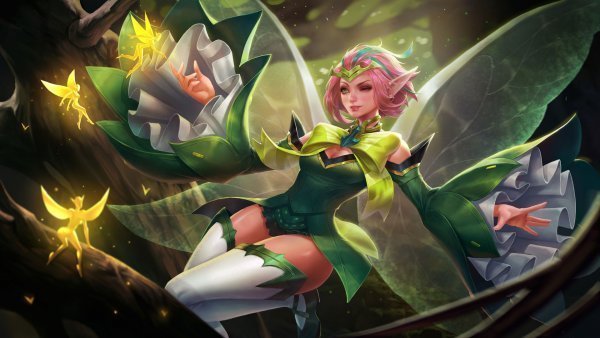Chúng tôi rất vui được chia sẻ kiến thức sâu sắc về từ khóa Best Regards vs Kind Regards Meaning – How To Make The Best. Bài viết best regards meaning tập trung giải thích ý nghĩa, vai trò và ứng dụng của từ khóa này trong tối ưu hóa nội dung web và chiến dịch tiếp thị. Chúng tôi cung cấp phương pháp tìm kiếm, phân tích từ khóa, kèm theo chiến lược và công cụ hữu ích. Hy vọng thông tin này sẽ giúp bạn xây dựng chiến lược thành công và thu hút người dùng.
Best regards is a classic business sign-off that can be used in almost any type of formal communication. In fact, many have argued that the “best” part of this phrase makes it non-optional! Let us know the kindest regards meaning and how it is used as well as the meaning of best regards!
Bạn Đang Xem: Best Regards vs Kind Regards Meaning – How To Make The Best
What Does “Best Regards” Mean?In a business context, the meaning of best regards is a standard sign-off that is often used when sending an email. It signals the end of the conversation and is less formal than your signature block, but more formal than “sincerely” or “yours truly.”
When To Use “Best Regards”?
You can use best regards in email closings with people you don’t know on a very personal level.
This could be with colleagues at work, clients, vendors, etc. In-person, most coworkers would also exchange hugs and say goodbye after they sign off on their emails.
However, this would not work in written communication due to the lack of body language to communicate emotion.
Kind Regards vs. Best Regards!
Alternatives To Best Regards
While there are no strict rules about sign-offs after email correspondences, there are well-known alternatives to consider:
Regards: This means much the same as “best regards” and can be suitable when writing to someone with whom you have a solid working relationship or acquaintance.
Kind regards: Know the kindest regards meaning, as it is suitable for those you know well and with whom you have a friendly relationship. It can seem too casual to use when you don’t know someone very well.
With appreciation: This means that you are thankful for the time you have spent working on the project or correspondence with them.
It can be used in more informal emails to mark a positive conclusion of business without being too formal, but some may find it overly casual.
Xem Thêm : Mật độ cây lá – tầm quan trọng và cách tính chính xác
Warmest regards: This is a friendly way to close an email, especially if you know your correspondent on a more personal level. It’s best used in place of “best regards” when corresponding with someone with whom you have developed a friendship.
Cordially: This sign-off can be suited for both business and personal emails as it carries a balance between warmth and professionalism.
However, the distinction between cordially and respectfully can be hard to tell apart. If you are not sure which one to use, opt for cordially rather than disrespectfully.
Respectfully: This shows professional courtesy and is much more formal than “kind regards,” but much less formal than “best regards.”
Thank you: If this email has been particularly helpful or useful, express your thanks to the person by signing off as “thank you.” In less formal emails, it might be better to say “thanks” or simply end the email without a sign-off at all.
However, this would not be considered professional in most business contexts.
Happy weekend/week! : This is a casual sign-off that is most appropriate for those with whom you have developed a lighthearted, friendly relationship. It is not suitable when corresponding with someone who expects a more formal tone.
Examples Of Using “Best Regards”
Here is an example of an email in which the sender would use best regards:
Hi John,
I wanted to thank you again for your help yesterday. I’m glad we were able to resolve our issue and that it didn’t take too long! We appreciate all that you do to help us out around here. If there’s anything we can do for you, please don’t hesitate to let us know. Have a great weekend!
Best regards,
Jane Doe
Example Of a Semi-Formal Email
Xem Thêm : Ca sĩ Cường Seven là ai? Tiểu sử của chàng nghệ sĩ điển trai đào hoa
Here is an example of an email in which the sender would use kind regards:
Hi John,
Thank you so much for your help yesterday! I know we must have seemed like a handful and I really appreciate your patience and understanding. It’s nice to work with someone who has such empathy and kindness. Take care and a happy weekend!
Kind regards,
Jane Doe
Example Of A Less Formal Email
Here is an example of an email in which the sender would not use any sign-off:
Hi John,
I wanted to thank you again for your help yesterday. We are glad that everything went smoothly on our end because that was all thanks to you! If there’s anything else we can do for you, please let us know. Have a great weekend!
Thank you,
Best regards,
Jane Doe
Wrapping Up
In the end, it all comes down to your personal preference. You will have a better understanding of what you want from an email when you know more about yourself and how each phrase makes you feel. Be sure to share this blog with others so they can make their own decision on which way they would like for people to address them in emails – best regards vs kind regards!
Nguồn: https://kengencyclopedia.org
Danh mục: Hỏi Đáp






